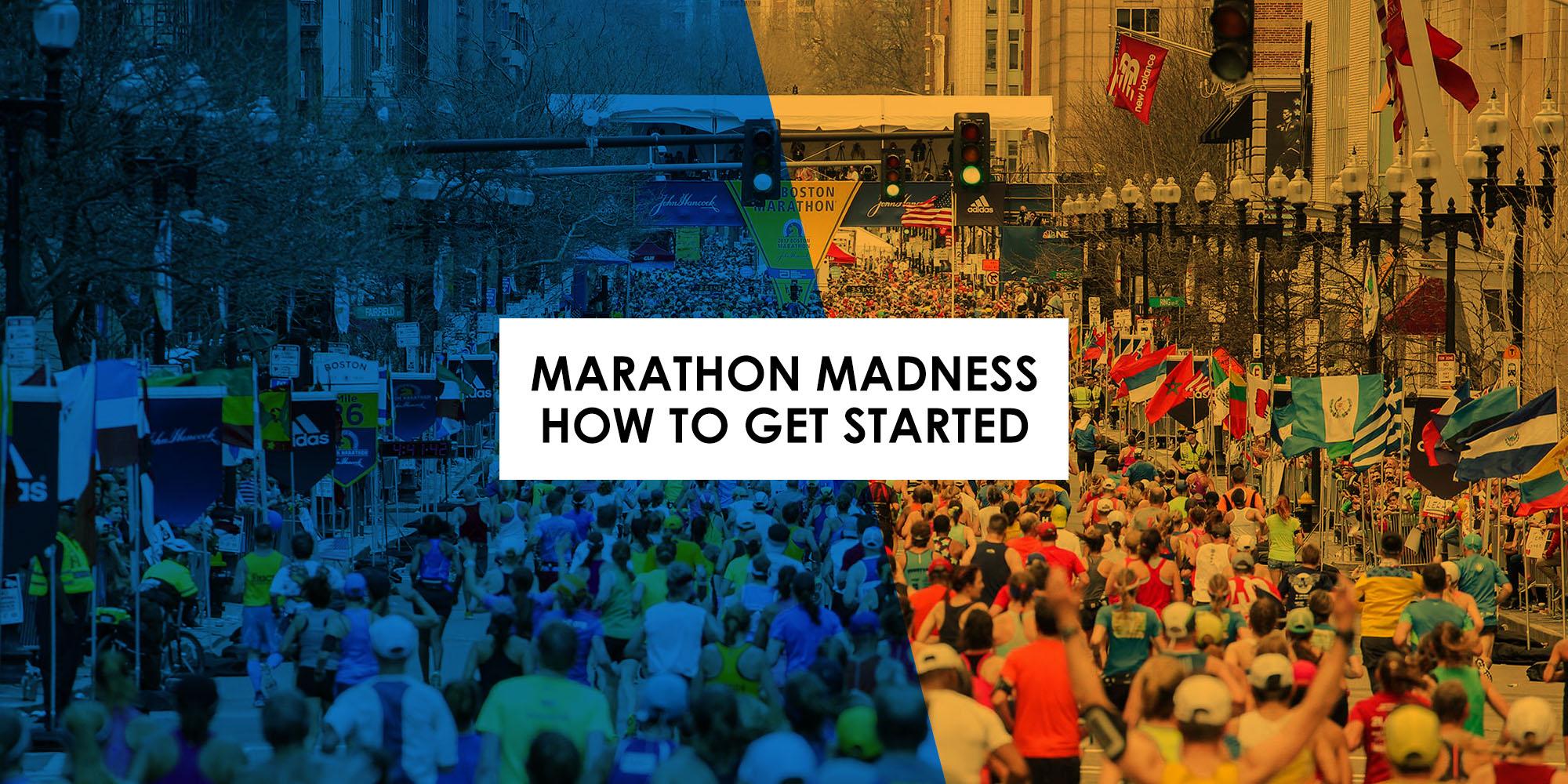Feeling inspired by the two major marathons in the past two weeks (three in the past two months–Tokyo, Boston, and London)? A lot of runners are thinking about that 26.2 right now. Maybe you’re considering signing up for a marathon or are already in the thick of your training. Is it crazy? Only if you believe it is. (Okay, fine—maybe a little.)
If you’ve decided to embark on marathon madness (or you’re already there), we’ve got some helpful advice on how to get started on your marathon journey.
Training Time
As a rule of thumb, for the newbies, you need about 16-20 weeks to train for the distance unless you’ve already established some solid distance endurance fitness. Just remember to give yourself that time to adequately prepare for the distance so that you can enjoy the journey on race day. Can you do it undertrained? Sure, but it will suck, as some more experienced marathoners can testify. So budget plenty of training time for yourself.
Find a Buddy (or Buddies)
Some runners prefer running solo, but having a running buddy or a group of buddies is hard to beat. A good run buddy can help motivate you when you’re having a tough run, and you can do the same for your buddy.
Run buddies can also provide that extra push to achieve your pacing or intervals during workouts. On your easier runs, run buddies are great for chatting and basically solving the world’s problems. And, there is safety in numbers, as an added bonus of run buddies.
There are some fun, welcoming running groups in our area. Reach out and join them. It’ll put you that much closer to your marathon goal.
Local run clubs we recommend:
Cross-Training
A very effective way to help runners avoid significant injury is cross-training. That can be cycling, swimming, paddle boarding, or strength training, for example. Any activity other than running can benefit your fitness as a runner and your recovery from harder or longer runs.
Recover Smart
Pay attention to your recovery for your post-run workouts and rest days. Incorporating foam rolling and stretching into your post-run routine goes a long way toward helping boost your muscle recovery and helping prevent injury.

Another great (and simple) recovery technique is the classic “legs up the wall” yoga pose to help clear lactic acid buildup from your legs. Consuming a 4:1 ratio of carbs and protein after your runs will aid in glycogen store recovery for your muscles (this can vary a bit, based on a few different metabolic factors, but it’s a good rule of thumb).
Additionally, drinking plenty of water after you run will help reduce muscle soreness and prevent cramps.
Rest Days
This may seem obvious, but too many runners neglect their rest days. We know that life often gets in the way of rest. Do your best to prioritize chilling and resting your body one day a week. Getting plenty of sleep at night consistently is also part of this, but keep that rest day sacred. Your body will thank you for it.

At Bikes Palm Beach, we love our run community and have a wide selection of running gear to keep your marathon training running smoothly. Stop by any day to pick up new shoes, apparel, and hydration/nutrition to keep you moving toward achieving that finish line goal.




